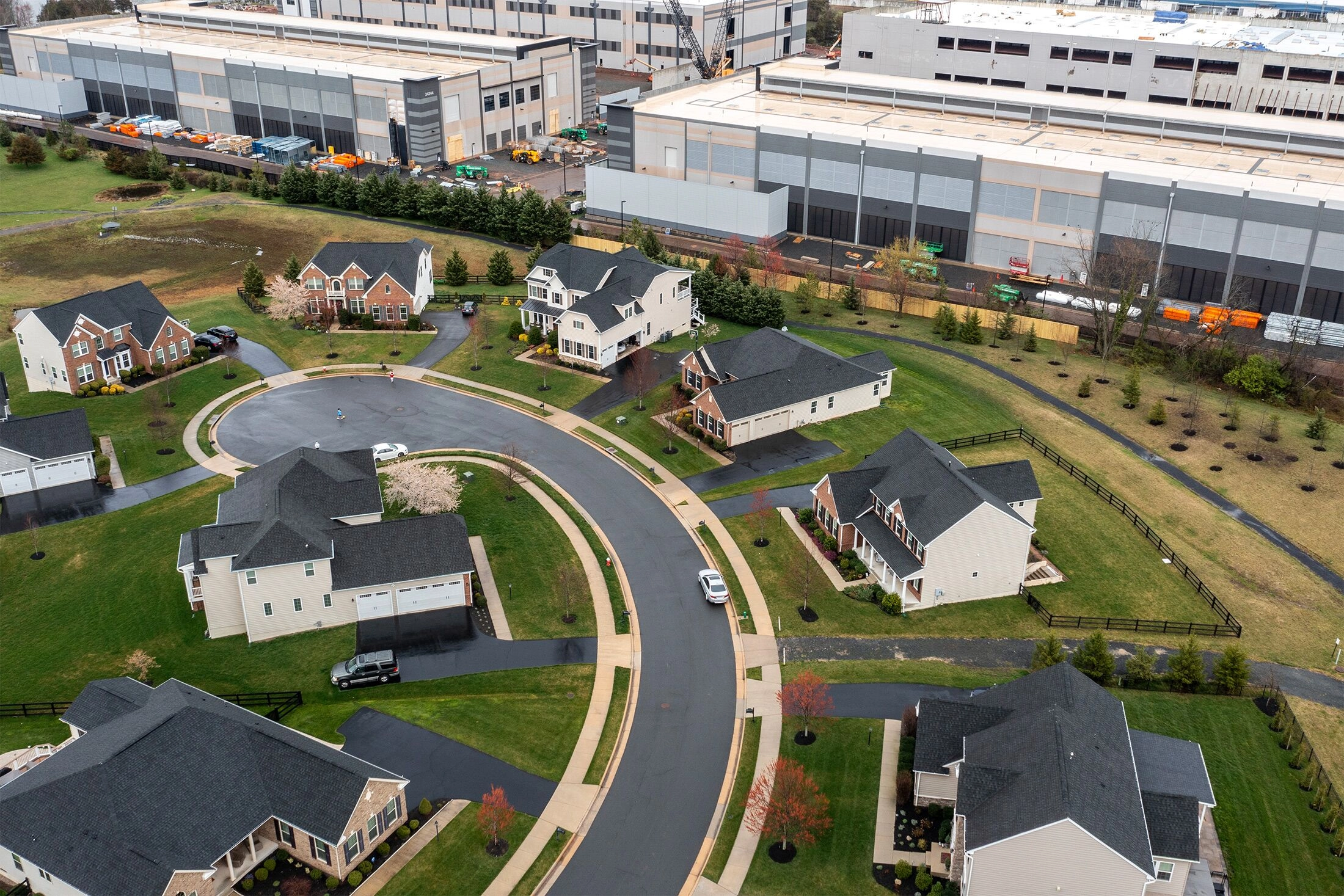
 Amazon.com Inc. plans to spend almost $150 billion in the coming 15 years on data centers, giving the cloud-computing giant the firepower to handle an expected explosion in demand for artificial intelligence applications and other digital services.
Amazon.com Inc. plans to spend almost $150 billion in the coming 15 years on data centers, giving the cloud-computing giant the firepower to handle an expected explosion in demand for artificial intelligence applications and other digital services.
The spending spree is a show of force as the company looks to maintain its grip on the cloud services market, where it holds about twice the share of No. 2 player Microsoft Corp. Sales growth at Amazon Web Services slowed to a record low last year as business customers cut costs and delayed modernization projects. Now spending is starting to pick up again, and Amazon is keen to secure land and electricity for its power-hungry facilities.
“We’re expanding capacity quite significantly,” said Kevin Miller, an AWS vice president who oversees the company’s data centers. “I think that just gives us the ability to get closer to customers.”
Over recent years, Amazon has prepared to invest $148 billion in constructing and managing data centers worldwide. New sites are set to appear in places like Mississippi, Saudi Arabia, and Malaysia, along with expansions to existing hubs in northern Virginia and Oregon.
Amazon’s anticipated expenditure on data farms drastically exceeds that of Microsoft and Google, as per Alphabet Inc. The latter two, however, do not regularly disclose their data center-related spending. Spokespeople from both Microsoft and Google refused to offer equal figures, noting that each corporation probably incorporates various expenses into their calculations.
Remarkably, in the wake of cost-cutting initiatives at Amazon, AWS’s capital expenses on data centers decreased by 2% in 2023. This is the first time such a cutback has occurred. Meanwhile, Microsoft increased its spending by over 50%, according to research firm Dell’Oro Group. Nevertheless, Amazon’s CFO announced last month that the capital expenditure would rise to support growth in AWS, including projects related to Artificial Intelligence (AI).
A significant portion of Amazon’s data center expansion is designed to accommodate an increase in demand for corporate services like file storage and databases. Additionally, these facilities, coupled with sophisticated and costly chips, will supply the immense computational power needed for the anticipated surge in generative AI.
Noted frontrunners in developing commercial text-generation and analysis software, Microsoft, OpenAI and Google, are now facing competition from Amazon. Amazon is actively developing its own infrastructure to compete with ChatGPT by OpenAI, collaborating with other enterprises to drive AI services through its servers. Consequently, Amazon foresees an AI-related revenue windfall of tens of billions of dollars.
Amazon Web Services (AWS) established its inaugural server farms in Virginia, bordering metropolitan Washington. The region, which was the setting for the first commercial internet junction, remains a chief center for video streaming and corporate and state data. Ensuingly, Amazon inaugurated data centers in the rural territory of eastern Oregon, capitalizing on inexpensive hydroelectricity and significant tax incentives. Roughly eighty percent of AWS’s US infrastructure expenditure has been allocated to Virginia and Oregon.
However, procuring utilities in those states is becoming progressively challenging due to the substantial electricity requirement of data centers. This increasing demand is burdening utility providers. For several months in 2022, Dominion Energy Inc., the principal power supplier for Virginia’s data center region, struggled to meet the growing demands and temporarily halted connections to facilities that were otherwise prepared to initiate operations. The power company anticipates that demand will nearly double over the forthcoming 15 years, predominantly driven by data centers.
Contrarily, in Oregon, the electricity consumption of Amazon’s server farms surpasses the local utility’s allotment of hydroelectric power. This necessitates the purchase of electricity produced by natural gas, as reported earlier this year by the Oregonian newspaper.
“There’s a lot more vetting that is occurring upfront and detailed planning that is required from the utility companies to understand how real the project is because there’s so much demand out there that was not there five years ago,” said Ali Greenwood, an executive director at the data center practice of Cushman & Wakefield, a commercial real estate firm.
So Amazon is getting creative.
In February, the company said it would spend about $10 billion on two data center campuses in Mississippi. Billed as the largest corporate project in state history, AWS’s effort will plant roots in the southern US, a region that has seen comparatively little data center spending outside of major cities like Dallas and Atlanta.
Earlier this month, the operator of a 40-year-old nuclear power plant on the Susquehanna River in Pennsylvania said AWS had agreed to spend $650 million to acquire a data center campus connected to the facility.
AWS, in Round Rock, Texas, has recently achieved zoning approval to construct a data center along with an electrical substation adjacent to a delivery depot. This was placed on part of a former ranch that the firm purchased amid a spending spree incited by the pandemic. If the plan moves forward, it would mark the first instance of the company settling such facilities on identical land.
“At present, there is simply a wild scramble for any location promising power availability anytime soon,” noted Charles Fitzgerald, an ex-manager at Microsoft and a Seattle-based investor overseeing cloud firm expenditure.
In spite of the ongoing ramp-up, Amazon and other organisations are witnessing escalating opposition to data centers. The bulk of the present hostility emanates from Virginia, where locals gripe about the incessant humming of server farms, and conservationalists deplore the rampant encroachment of these vast facilities onto Civil War battleground locales. Nevertheless, resistance hotspots are emerging around the US and are likely to proliferate as data centers, irrespective of whether Amazon or other firms build them, begin their operations.
Furthermore, advocates for renewable energy argue that the current rush to erect new facilities has inadvertently resurrected older, planet-warming fossil fuel-dependent plants and has even advocated for the construction of new ones. In Mississippi, Amazon has agreed to finance the local utility to establish solar farms. However, the company will also run the data centers using a newly constructed natural-gas power plant expected to be functional for many decades.
“Corporations such as Amazon are going to need to leverage their purchasing power to compel utilities to alter their practices,” Daniel Tait, the Energy and Policy Institute’s research and communications manager, suggested, supporting renewable sources. “They are not only promoting increased use of fossil fuels, but setting a pattern that all who follow will replicate.”
Amazon, in recent years, has emerged as the world’s top corporate consumer of renewable energy, as part of a commitment to fuel all its operations with renewable electricity by 2025. However, the locations of these projects can often be a significant distance from its data center leading to a demand-supply discrepancy, a problem plaguing the deteriorating and segmented US power grid.
Miller, Amazon’s data center head, stated that the company is exploring beyond wind and solar farm clean energy projects, such as battery storage and nuclear power that could replace fossil fuel-based plants. He vowed to collaborate with utilities to “synchronize our energy requirements with renewable, carbon-free power”.
LowEndBox is a go-to resource for those seeking budget-friendly hosting solutions. This editorial focuses on syndicated news articles, delivering timely information and insights about web hosting, technology, and internet services that cater specifically to the LowEndBox community. With a wide range of topics covered, it serves as a comprehensive source of up-to-date content, helping users stay informed about the rapidly changing landscape of affordable hosting solutions.






















Leave a Reply